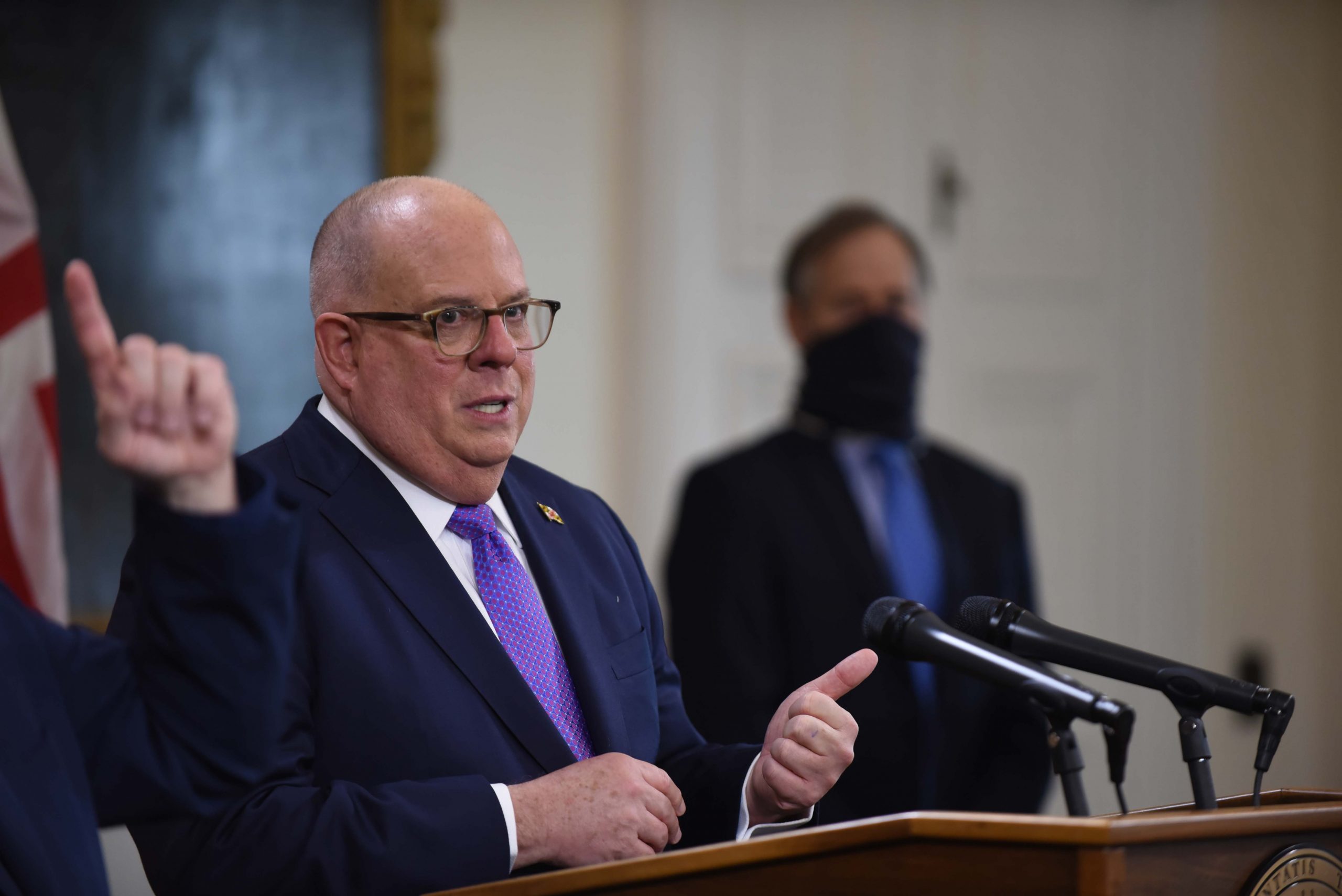ANNAPOLIS, Md. — “This virus is spiking out of control,” Gov. Larry Hogan, R, said during announcements Tuesday restricting visitations to hospitals and nursing homes and ordering 10 p.m. closing times for restaurants and bars, all in an effort to tackle an ongoing COVID-19 surge.
“We are very concerned that hospitals in western Maryland are already at capacity,” Hogan added, citing rising rates of positivity and hospitalizations, most significantly in rural areas.
In response, Hogan issued a new emergency order, effective Friday at 5 p.m., closing bars and restaurants at 10 p.m., limiting capacity for retail and religious spaces to 50%, prohibiting fans at racetracks and stadiums, and implementing new hospital surge management rules.
New surge rules include restricting hospital visitations to end-of-life care, obstetrics, guardians of minors, and support for people with disabilities, patient transfer from hospitals at or near capacity, guidance to avoid elective procedures that may require ventilation, ICU or nursing facility care.
Nursing home visits were also limited to compassionate care with visitors being required to have proof of a negative COVID-19 test result within 72 hours prior to their visit. This is in addition to mandatory twice-weekly testing for nursing home staff and mandatory weekly testing for residents.
These restrictions are in addition to previous indoor dining reductions from 75% to 50%, mandatory telework implementation for state employees and out-of-state travel advisories, all announced on Nov. 11.
Dr. Thomas Scalea, the physician-in-chief of the Shock Trauma Center at the University of Maryland Medical Center, spoke further on the plan for hospitals near or at capacity to more easily transfer patients to available hospitals when necessary.
“Now a single phone call will give (providers) access to the appropriate level of critical care services,” Scalea said.
As of Tuesday, the Maryland Department of Health reported nearly 170,000 confirmed COVID-19 cases, over 1,000 hospitalizations and over 4,000 deaths.
Scalea and Hogan noted lessons learned during the first surge beginning in March that are now saving lives.
“I can’t remember learning this much, this fast about a disease. That doesn’t mean everybody lives though,” Scalea cautioned. “They’re not universally successful. We’d be really happy to (use these lessons) less often.”
Hogan also was cautiously optimistic about the state seeing fewer deaths from the disease than during the early stages of the pandemic.
However, he stated that while the first wave affected mostly suburban areas, this current surge is hitting western Maryland particularly hard, especially Allegany and Garrett counties.
“Certain people there had a false sense of security,” Hogan said, referring to the western counties where cases are spiking. “Maybe they weren’t being as careful and not wearing masks. Now they’re calling us, begging for help, and we’re sending strike teams and moving patients out of their crowded hospitals.”
He stated another problem is with contact tracing compliance. Many refuse to give information to tracers regarding possible COVID-19 exposure.
“A little more than half, if we contact them, they don’t want to participate,” Hogan said. “We have to get the word out for people to participate.”
But one area of critical success has been with the state’s electronic exposure notification system.
MD COVID Alert is a mobile phone app designed to assist contact tracing efforts and help limit the community spread of the disease by alerting users to possible virus exposure.
The app was launched Nov. 10, and Hogan stated almost a million Marylanders have already signed up for the system.
“The battle’s not getting any easier,” he said. “But we have more weapons and more soldiers on the field, and we’re in a better position to fight back.”

